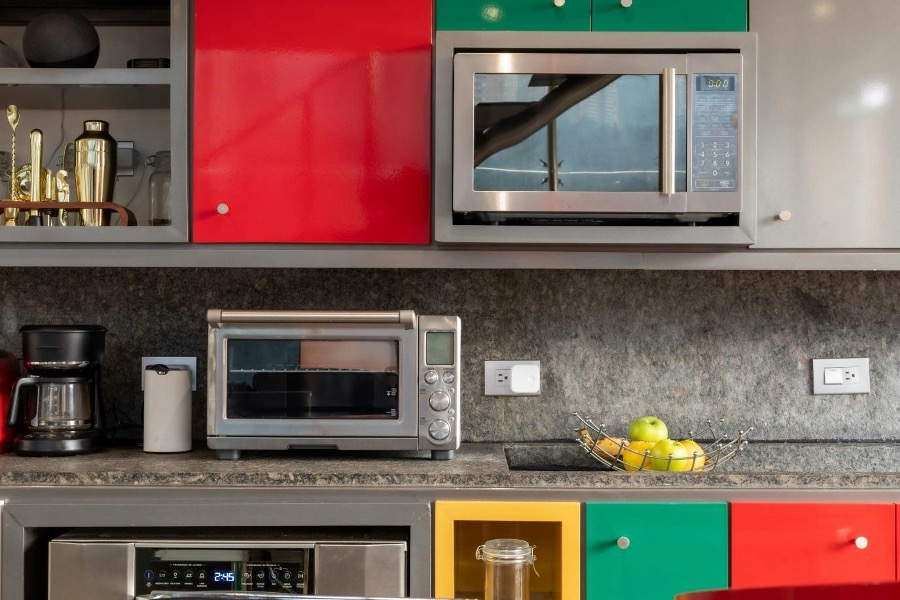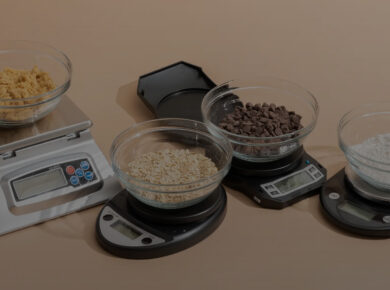Whether you’re nuking popcorn for movie night or reheating your meal, a microwave has long become a staple in most kitchens due to its versatility, convenience, and speed. With the appliance omnipresent in the majority of households, have you ever wondered how it works? Although the principle behind a microwave oven is relatively simple, it might give a common user a pause. In this explainer, we’ll delve deeper into how a microwave works, discuss what is magnetron, and cover the most important do’s and don’ts when operating the appliance.
How Microwave Works: A Step-by-Step Process
Although microwaves have been a reliable kitchen companion since the 1970s, the underlying principle of what makes the appliance so quick and effective hasn’t changed decades after. Despite their small size, microwave ovens carry a lot of energy: the appliance heats and cooks food by exposing it to electromagnetic radiation, which causes the molecules in the food to vibrate, generating heat. What does contribute to this process? Here’s a look at the main factors:
- Although the working principle of microwave ovens is not complicated, magnetrons will give plenty of reason to think, even to a more tech-savvy consumer. A magnetron is the main component of a microwave that generates electromagnetic waves inside the microwave.
- The electromagnetic waves produced by the magnetron bounce back and forth through the interior of the appliance.
- The waves penetrate the food and make the molecules vibrate, which, in turn, generates heat. And voila! Your meals are warm in a matter of seconds.
Although it’s a simplified explanation (in reality, the magnetron is a much more complex mechanism that consists of smaller parts, like anode, cathode, and magnet, which generate a magnetic field), it hopefully gives a basic idea of how does a microwave heat food.

An Overview of Microwave Heating Regimes
Modern microwave ovens come with a wide range of settings and features that bring your cooking routine to the next level. In addition to power levels, like high or low-level intensity heating, you can customize your cooking with a set of programmed settings. Of course, the pre-sets depend on your exact model. Here’s a brief overview of the most common heating programs available in modern microwaves.
1. Defrost Setting
The majority of solo microwave ovens — the entry-level appliances that cover basic heating and cooking — also feature a defrosting mode. Tailor-made for thawing food, the setting lowers the microwave’s power between 20 and 30 percent. The lower power is crucial for defrosting a range of foods, like meats and veggies, without cooking them.
2. Convection Setting
Typically available in higher-end appliances, convection settings rely on oven-like heating elements and a fan to evenly circulate the heat inside the microwave. A convection microwave plays a double duty: it’s a basic microwave that quickly heats the food and a convection oven that opens a new world of recipes and cooking modes, like roasting, baking, and even air frying — all in one shiny and bit more expensive package.
3. Sensor Setting
Being unsure how long you should heat your food, constantly regulating, and adding extra time to end up with a scorching or lukewarm meal are common issues. Enter sensor setting, a state-of-the-art cooking mode that relies on a sensor to detect the moisture level of your food or beverage, which, in turn, automatically sets appropriate time and power settings so you can enjoy your perfectly heated meal.
4. Steam Setting
Why buy a separate steamer if you can steam fish, rice, and veggies in a microwave? Certain microwave models have a steam setting that allows cooking a range of pre-programmed foods, like fresh vegetables. They typically come with a steamer vessel in tow.

Microwave Safety: Which Foods Can You Cook?
From multiple pre-programmed modes to compatible utensils and power levels, it is undeniable that first-time microwave users might find the microwave use rules a bit overwhelming. What containers can you use, and which foods you absolutely can’t cook in the microwave? Let’s get into it.

Use Microwave-safe Cookware
Putting the wrong materials into the appliance, like aluminum foil or metals, can compromise the safety of the food and the microwave. Although practically everyone heard about the dangers of sparking foils, what about other materials that you can or absolutely can’t put in the oven? Here’s a quick look at some of the microwave-safe cookware:
- Glass and Ceramics. Both are safe for microwave use unless it’s handmade pottery, crystal, or has metallic paints or inlays that can cause sparks inside the appliance. If you doubt whether handmade pottery or ceramics are microwave-friendly, you can conduct a one-minute test: put water in the dish and microwave it for 30 seconds.
- Plastics. Using plastics in microwaves has been a point of contention for a while. After all, it’s a proven fact that electromagnetic waves can cause harmful chemicals, like phthalates and BPA, to leech into your food. The bottom line is that you shouldn’t use plastics unless they are labeled microwave-safe. Pay attention that even if the containers are deemed safe, you shouldn’t use them for extended periods, especially if they are cracked, discolored, or showing signs of wear.
- Ziploc Bags. Although storage bags are typically safe for reheating and defrosting, you should check whether the brand explicitly states this on their product.
As a general guideline, if you see the microwave-safe label on the cookware, it means that the used materials are deemed safe and specifically designed to withstand the pressure and high temperature of the appliance.
Don’t Cook Sealed Foods
Putting vacuum-sealed packages into the appliance can cause an explosion. The same principle applies to eggs: cooking eggs in a shell can cause them to explode, which, in the best-case scenario, will end with you scrubbing the microwave cavity from the splatters. You also should never start an empty microwave, as the microwaves bounce back to the magnetron, damaging the appliance.

Conclusion
Microwave ovens are handy appliances that nuke your meals in mere seconds. Although the principle behind how does a microwave heat foods may sound pretty simple, the work of magnetrons and other elements is highly complex. Still, understanding the basics is necessary, as it will allow you to safely use the appliance for years to come.
Want to BUY this product?
Check out retailer list for your country.








